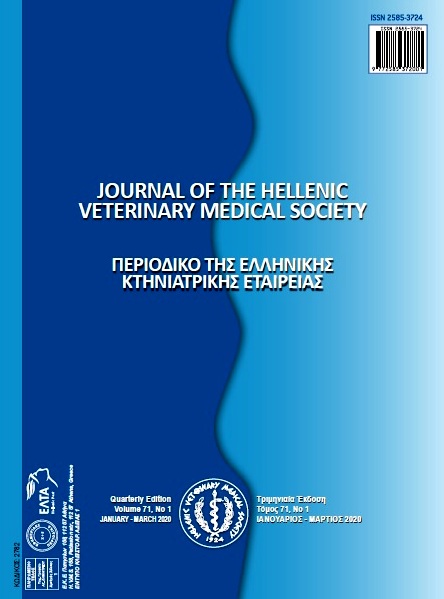Studies on Pseudomonas aeruginosa Infection in Hatcheries and Chicken

Abstract
The aim of this work was to spot light on the presence of Pseudomonas aeruginosa (P. aeruginosa) strains in hatcheries and dead in shell embryos. A total of 406 samples representing 200 and 206 swabs from hatcheries environment and yolk sacs of dead in shell embryos were collected from Damietta governorate, Egypt. P. aeruginosa was isolated and identified. Some virulent genes (toxA, psIA and fliC) of P. aeruginosa were detected using polymerase chain reaction (PCR). The antimicrobial susceptibility of P. aeruginosa was tested in vitro. Day and 11 days old broiler chicks were challenged with P. aeruginosa to determine the pathogenicity of the isolated strains. The results showed that P. aeruginosa was recovered from 16 (8%) out of 200 hatcheries and from 17 (8.25%) out of 206 chicken embryos samples. Isolated strains of P. aeruginosa showed presence of toxA, psIA and fliC virulent genes. P. aeruginosa strains were sensitive (100%) to ciprofloxacin, levofloxacin and gentamycin but resistant (100%) to amoxycillin/clavulanic acid, doxycycline and erythromycin. The pathogenicity test of day and 11 days old chicks revealed that P. aeruginosa was highly pathogenic induced mortality rates of 72 and 40%, respectively. Septicaemia of internal organs, unabsorbed yolk sacs, pneumonia, greenish exudates in the abdominal cavity, liver necrosis and enteritis were the predominant lesions. Histopathological changes supported the previous lesions. In conclusion, P. aeruginosa is of great importance pathogen of embryos and newly hatched chicks based on presence of virulent genes as well as in vivo pathogenicity study; respectively.
Article Details
- How to Cite
-
ERAKY, R. D., ABD EL-GHANY, W. A., & SOLIMAN, K. M. (2020). Studies on Pseudomonas aeruginosa Infection in Hatcheries and Chicken. Journal of the Hellenic Veterinary Medical Society, 71(1), 1953–1962. https://doi.org/10.12681/jhvms.22937
- Issue
- Vol. 71 No. 1 (2020)
- Section
- Research Articles

This work is licensed under a Creative Commons Attribution-NonCommercial 4.0 International License.
Authors who publish with this journal agree to the following terms:
· Authors retain copyright and grant the journal right of first publication with the work simultaneously licensed under a Creative Commons Attribution Non-Commercial License that allows others to share the work with an acknowledgement of the work's authorship and initial publication in this journal.
· Authors are able to enter into separate, additional contractual arrangements for the non-exclusive distribution of the journal's published version of the work (e.g. post it to an institutional repository or publish it in a book), with an acknowledgement of its initial publication in this journal.
· Authors are permitted and encouraged to post their work online (preferably in institutional repositories or on their website) prior to and during the submission process, as it can lead to productive exchanges, as well as earlier and greater citation of published work.


